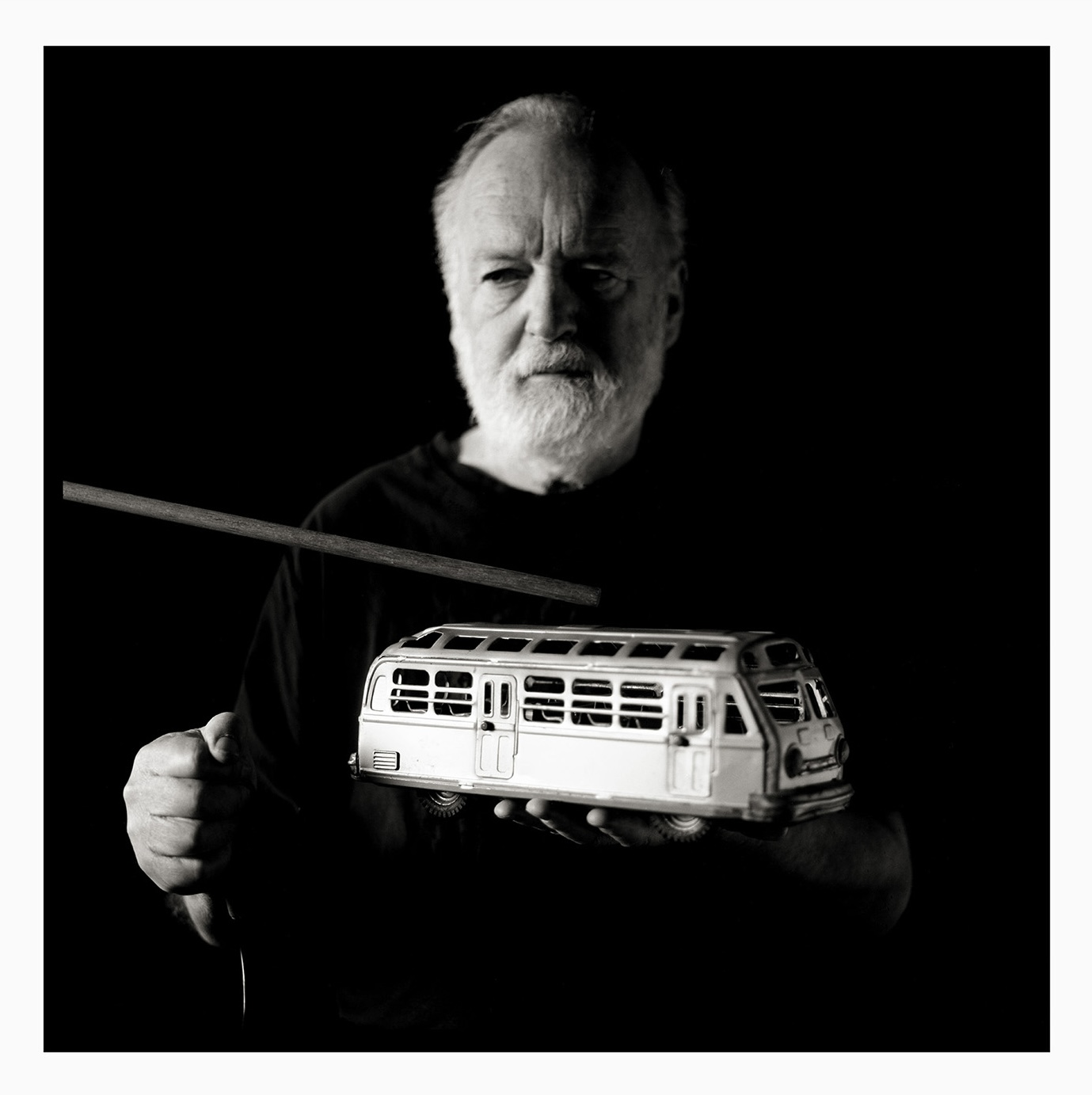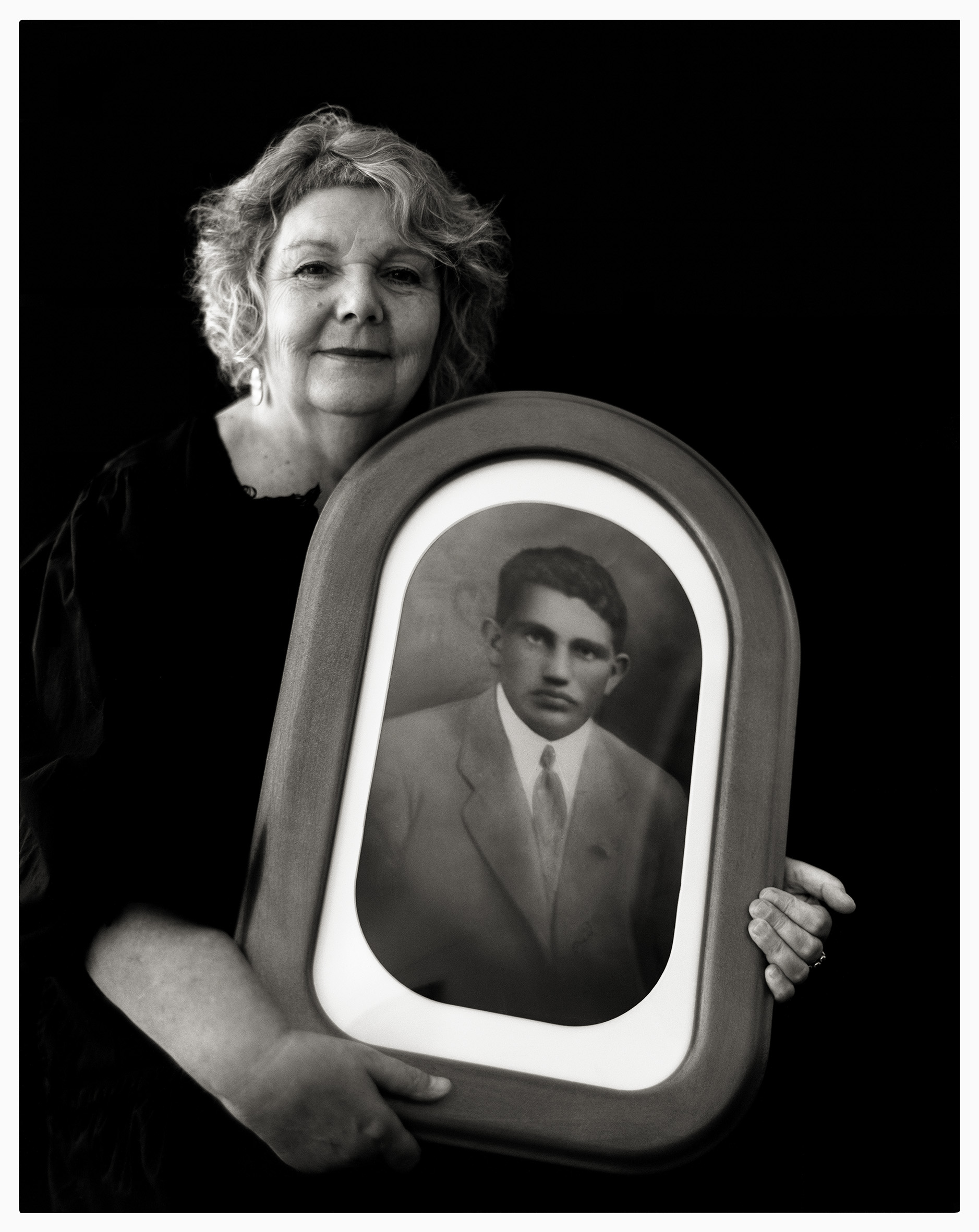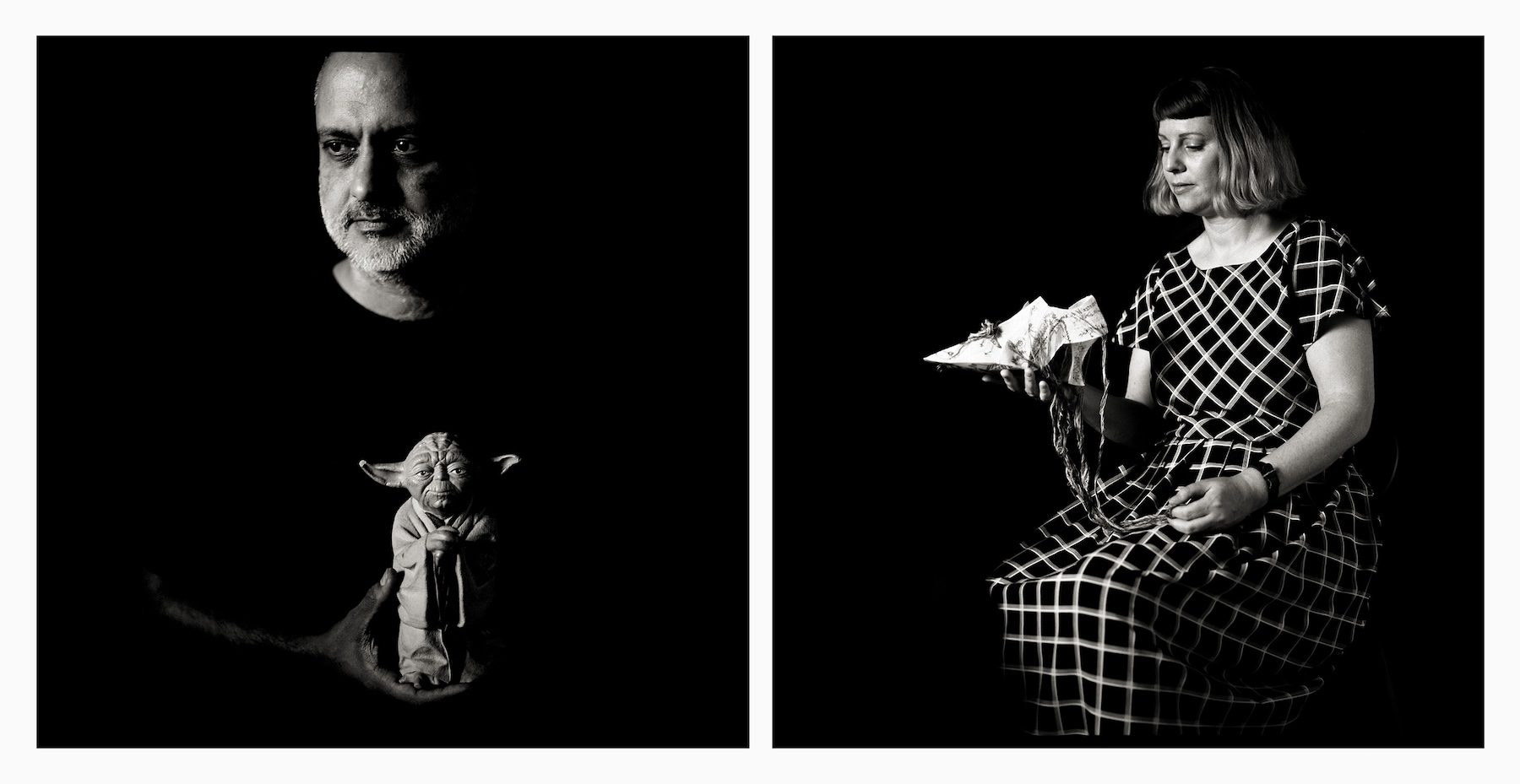Portrait series sheds light on the secret lives of South Australian artists
Photographer Tony Kearney’s solo SALA exhibition is like a who’s who of the state’s visual arts scene, featuring more than 70 film portraits taken in a makeshift studio in the lounge of his Port Adelaide warehouse apartment.

When Tony Kearney invited South Australian visual artists to come to his home with an interesting item for a portrait photoshoot, he could hardly have imagined the eclectic range of objects they would choose.
Ceramicist Kirsten Coelho turned up with a treasured 1970s Fisher Price toy car and wooden dog from her childhood, with the dog bearing her and her brother’s teeth marks. Artist and musician Zaachariaha Fielding brought a necklace made from seeds collected in his homeland in the APY Lands. SALA CEO Bridget Alfred came with a Babushka doll given to her by her mother when she was pregnant with her first daughter, and painter Tom Phillips wore a T-shirt featuring a painting by Francis Bacon, one of his favourite artists.
But it was jeweller Lauren Simeoni who offered the biggest surprise.
“Lauren basically brought a swimming lane with her, as in the buoys and the ropes and knots between them, and she used that as a necklace,” Kearney says. “She’s into swimming. She lives near the beach so she goes for a swim each day – or she did before the nasties entered the water.”
Kearney, an experienced photographer whose work has been acquired by the National Portrait Gallery, embarked on his latest project after being awarded the ‘Photographic Opportunity’ at the end of the 2024 SALA Festival. The resulting black and white portraits of the 76 artists who agreed to take part are now on show in a solo exhibition titled offering[s] at praxis ARTSPACE.

The photos were taken over seven months in a temporary studio set up in the lounge room of Kearney’s third-floor apartment. He used only the natural light from a window to illuminate his subjects, who were encouraged to wear black.
You might like
“I had a sheet of black velvet hanging behind them and they were seated and I was maximum two metres away from them because that was all space I could get in my living room,” he explains. “All the light comes through a window with louvres, so I could adjust it.”
He says the shoots were weather-dependent.
“If it was overcast or raining, I didn’t have enough light… it was a blessing that we got the hundred days of no rain at the start of the year, but it was also a curse in that that hundred days of no rain brought dust and the dust brought way more work for me to clean up the negatives. I’d spend two hours just getting rid of the dust spots from the negatives for each print.”
Kearney likes working with old film cameras, both for the quality and effect. The offering[s] portraits were taken with a 60-year-old medium-format Hasselblad 500C camera and an 80-year-old Pacemaker Speed Graphic 4×5 sheet film camera with an even older aerial photography lens.
The black background and short depth of field means the focus is firmly on each subject and their chosen object.
“I told them to bring something interesting,” Kearney says. “Basically, it’s something that inspires you, something that you’ve created, or something you cherish. So the items that you see may have nothing to do with their practice but more to do with what they may have collected over the years or what their grandfather gave them.”
Among the most poignant images is one of artist and curator Nici Cumpston, who is almost dwarfed by the framed portrait she hold of her great-grandfather Khan Zada Snr, a cameleer who arrived in Australia at just 14 in the late 1860s. In an accompanying explanation, Cumpston explains that she never met Khan and was given the black and white hand-coloured portrait of him by his sister, her Aunty Mimi.

Subscribe for updates
“I treasure it because I see it as a portal into my past and a way of connecting with my mum’s dad and our Afghan/Aboriginal family,” she says. “I hand colour my own black and white photographs, so I deeply appreciate the effort involved in creating this image.”
Multidisciplinary artist Thom Buchanan — whose latest exhibition fractal paradigm is also on show at praxis ARTSPACE alongside Kearney’s — is pictured with a delicate everlasting paper daisy in tribute to his mother, while Jasmine Crisp is accompanied by her beloved childhood teddy, and Kate Hendry holds a ceramic duck she bought for her first share-home and which has since featured in her still-life works. Angela Valamanesh, Clare Belfrage, Mark Valenzuela and Alfred Lowe all selected works from their own practice that hold particular significance.
There are also several diptychs or double portraits, including of artist couple Roy Ananda, with a 1981 rubber puppet of Yoda from Star Wars, and Julia Robinson, with one of her earliest sculptural works.
“Making them comfortable,” Kearney replies, when asked the key to capturing a great portrait.
“As in, don’t rush them; just take photographs and chat. I learnt from them and they learnt from me, so that’s how it works. It’s not rocket science… They came to have a bit of fun as well. So we have people doing things that are slightly whacky, like putting things on top of their head to be photographed.”

Glass artist Tom Moore wears one of his large glass helmets, with flames and a bird on top. Christopher Orchard, former head of drawing at Adelaide Central School of Art, holds a pencil in his mouth. And artist and InReview contributor John Neylon cradles a horned helmet from the archive of friend and fellow artist Geoff Wilson.
“It is one of the dress-up props Geoff used when speaking in public to inject humour into the proceedings,” Neylon says of the helmet. “It is an echo of the bohemian life he encountered while a young artist in London in the ’50s and ’60s.”
The series includes a self-portrait in which Kearney holds an old toy tin bus in one hand, with a rubber bulb shutter release in the other and a stick seemingly floating just above the bus. He says he chose the objects to illustrate “how someone takes selfies with a 60-year-old medium-format film camera”.
“I could see myself in a mirror behind the camera but I had to focus on a stick in front of the camera first and then bring my object up under that stick and then flick the stick away and then take a photo with a long bulb extension.”
In total, Kearney took around 1200 photographs for the exhibition, developing the films in his laundry and then hanging them in the shower to dry. Each film frame was then scanned before the final selection was made and printed. Two-thirds of the portraits in offering[s] hang on the walls at praxis, and the rest are projected in a theatrette.
“In effect, it’s them [the artists] showing themselves possibly for the first time to their audience who know their work but don’t know them,” he says. “And then the next level is them offering something of a secret to their audience as well, so it’s offering[s], where I’m offering to take their photograph, and they’re offering to come along and be photographed and bring something that they cherish, prize or have created.”
Tony Kearney’s offering[s] is showing at praxis ARTSPACE in Bowden until August 16 as part of the 2025 SALA Festival.

